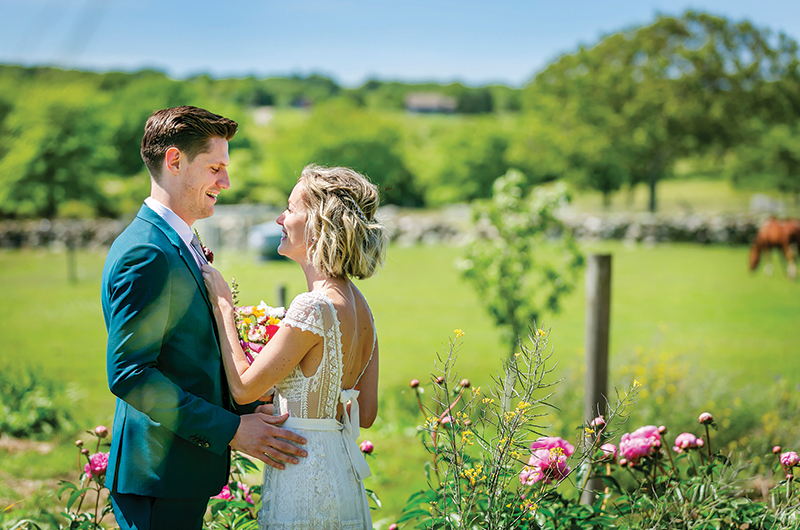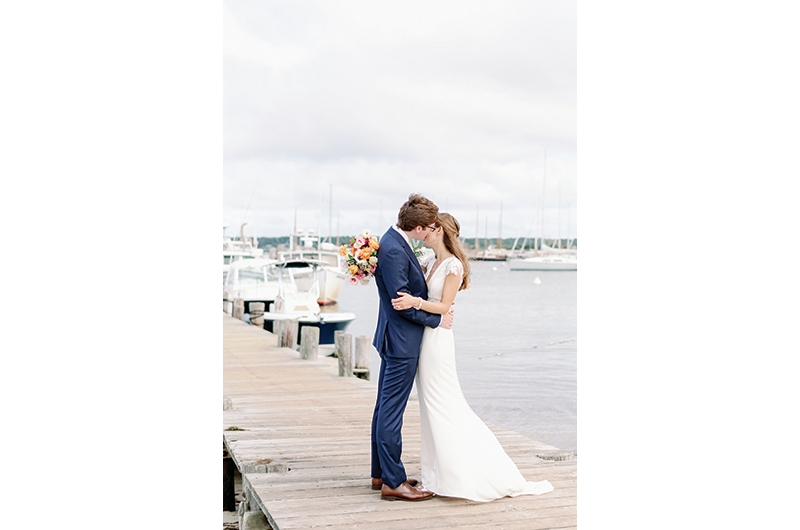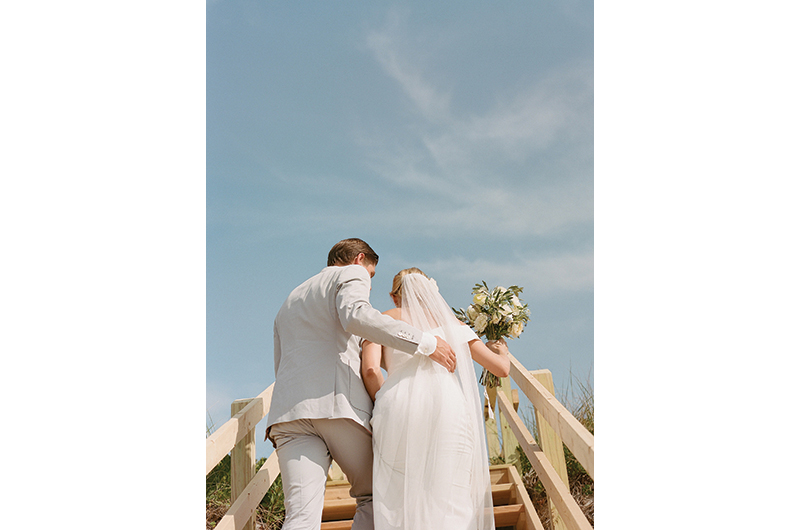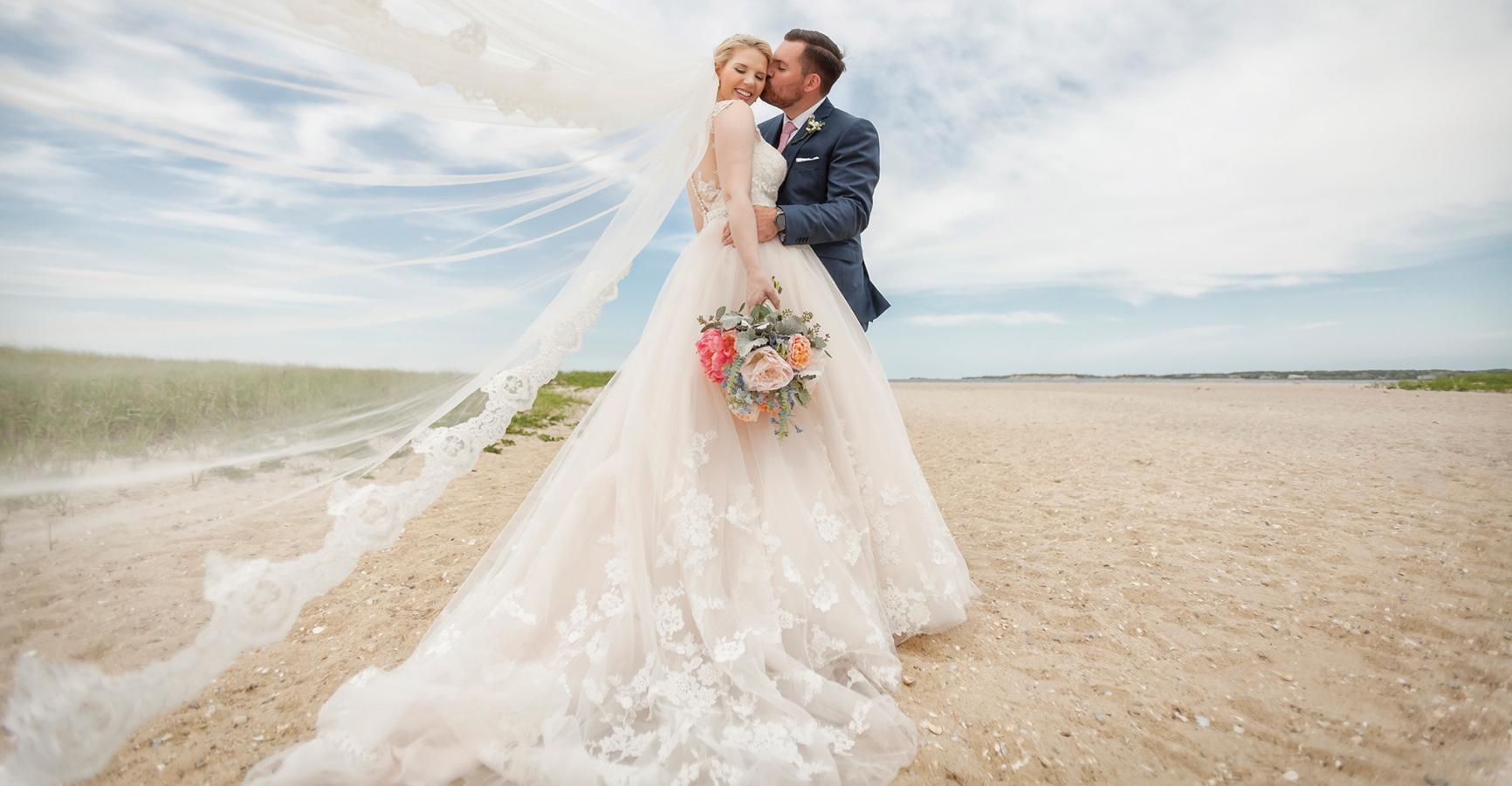Chances are good that you’ve never hired a professional photographer before. And it’s true: it’s not a decision that you want to make lightly. But while choosing a photographer isn’t as straightforward as, say, selecting your cake flavor, it doesn’t have to be an arduous task. Here, we walk you through the process of choosing the right person for the job and ensuring you end up with photographs you will cherish through the years.
Determine your photography style
If you’ve never paid attention to photography styles before, you’re not alone. Most people evaluate photographs based on the subject. They look at wedding photos and think, “Do I like that wedding dress or that shade of flowers?” But when choosing a photographer, you need to look beyond the content (which, after all, you can change to suit your own style). Instead, ask yourself: “Do I like the photograph itself?”
With some practice, you will begin to recognize that each photographer has a particular style, which functions as his or her calling card. Some prefer light and airy styles filled with muted pastels; others gravitate toward vibrant hues, dark and moody tones, or vintage-style sepia tints. The key is to figure out what you and your partner want. If you aren’t sure, refer to the wedding photographs you saved on Instagram and Pinterest and search for commonalities.
Bear in mind that there is a difference between shooting and editing style, says photographer Tim Correira. Shooting style refers to the types of images a photographer might take and how they compose them. (Think: formal, artsy, candid, etc. Most photographers employ several styles depending on the circumstances.)
A photographer’s editing style, on the other hand, is more obvious, and is likely to “change more quickly than shooting styles” over time, says Correira. “‘Light and airy,’ ‘dark and moody’ – those are like Instagram buzzwords for editing styles.”
There’s no best photography style, only personal preferences, but you want to choose the one that complements the tone of your day. If, for example, you envision bright flowers that form a focal point, look for a photographer whose editing style won’t dampen those pops of color. If you’re planning a black-tie affair, you might gravitate toward a photographer who is well-versed in formal poses and utilizes a classic or film style. Consider the details you’ve selected, as well as the particulars of your venue.
Finally, if you’re worried that your photos will appear dated in a few years’ time, you can’t go wrong with a classic approach. Correira points to some of the Instagram filter styles that were once popular and now seem passé.
“Five, ten, twenty years from now, the more stylized your photos are, the more dated they are going to appear,” he says. “A classic style is always going to be good.”

Randi Baird
Explore your options
Once you’ve figured out your preferred photography style, it’s time to compile a short list of candidates that fit the bill.
If you have recently married friends whose photos you liked, you can ask them for suggestions. Likewise, if you’re working with a wedding planner, he or she will suggest several preferred candidates. But if you’re going it alone (or just want to know all your options), you’ll want to turn to a comprehensive directory, such as the Vendor + Resource Guide on page 62, which includes all the photographers who regularly work on the Vineyard.
Take the time to review each photographer’s portfolio and social media pages, which will help you get a feel for the types of weddings they enjoy capturing and what they consider to be their best work.
Remember also to look beyond the photographs, especially if you haven’t received a personal or professional recommendation for the photographer. Check the “about me” page on their website, do your research, and search for online reviews. You want to weed out anyone who doesn’t look like a credible, experienced vendor with satisfied clients and specific wedding experience.
“The most important thing you can look for in a photographer is a recommendation that you can know and trust,” says Correira.
Reach out to top candidates
After you’ve identified at least three photographers you like, it’s time to send introductory emails. The letter should be tailored to each individual – no form letters, please – and explain what you like about their work, where and when you intend to marry, as well as an inquiry about availability on your wedding date and an estimate of pricing options.
Many photographers, in turn, will ask for additional information about you. “I ask them to show a few photos of inspiration or create a mood board of images to see what they like and don’t like,” says Island photographer Mila Lowe.
Although every photographer operates differently, if your date is available and the price range is within your budget, most will send full galleries for you to review. You want to make sure the galleries are from recent weddings the photographer has shot from start to finish – ideally at your own or a similar venue so that you can get an accurate idea of how he or she would capture your own celebration.
“If you like some of the photos but you don’t like some of the others, that should tell you something,” says Correira. “Anyone can take a dozen great photos out of 1,500 and send you those. You want a photographer to say, ‘Here is a wedding I did at the Harbor View in September. This is exactly what the clients got and you are welcome to look through it.’”

Jessica K. Feiden
Schedule a meeting
Assuming you like what you’ve seen so far, it’s time to take your relationship to the next level. “I like to schedule a quick call when couples inquire to hear about their plans and see if we’re a good fit,” says Island photographer Jocelyn Filley. “It’s all about chemistry. If you have good chemistry, you’ll have a great time working together.”
Photographer Larisa Stinga echoes those sentiments: “My advice that I always give my couples is to make sure they vibe well with their photographer. Even if the photographer is the most amazing and talented one out there, you want to make sure there is a chemistry. The photographer is the third wheel through the day. You better like their energy and personality.”
Of course, these meetings aren’t all about shared jokes and good rapport. You also need to discuss the details.
If you’ve already researched your candidates, you can dispense with many of the 100+ questions that guides such as The Knot suggest you ask. Instead, use this time to talk about your vision and expectations. Do you have your heart set on a first look portrait session? Is there a specific shot list you want your photographer to capture? Tell them about it, and make sure they are on board.
You’ll also want to discuss different wedding-day packages: what each photographer’s fee entails, the prospective timeline of the day, how many hours and locations you’d like them to cover (eight hours is the most popular option), and whether a second photographer will be on hand to capture additional angles.
Don’t skip the nitty-gritty details. Make sure you know exactly what you will receive when the photos are finalized, when you should expect to receive them, who owns the rights to the photos, and what happens in the event of a cancellation or postponement – the latter is especially important in the age of Covid.
“Managing expectations with clients is one of the most important things and it’s how you’re going to prevent people from being unhappy later,” Correira says. But he also urges you to be direct. “The best way for me to do what you want is for you to tell me what you want.”
Trust your intuition
If you’ve done your research, met with each candidate, explored their fee structures, and made your pros and cons lists, all that’s left to do is make the choice official.
Remember: you are not obligated to hire a photographer just because you met with them. You want to choose the one who is the best fit. The photographer wants that for you too. “The vast majority of problems that clients have with photographs, and photographers have with clients, is just that they weren’t a good fit to start with,” says Correira, “and that’s because photography is so subjective.”
“If you love what you are seeing and hearing from previous clients and have a good rapport, then I think that person is a great choice,” says Filley.
After you’ve made your decision, reach out to the photographer and ask him or her to send you a proposal based on the details that you’ve discussed. Read it carefully; this is your legal recourse should anything go wrong! If you’re happy with it, sign it and send it back with a deposit to hold the date.

Jocelyn Filley
Follow up as the date approaches
The amount of contact you have with your photographer after signing the contract will vary based on the individual and whether you have booked an engagement session.
“It really depends on the couple,” says Filley. “Sometimes they seek out my advice a lot through the planning process and sometimes I hardly hear from them until we get close to their wedding date.”
In almost all cases, the photographer will email you a questionnaire that is due one month before the wedding. The purpose of the questionnaire is to finalize details, such as locations, times, vendors, and contact information; as well as to gather specific family and friend groupings you want to capture and any information your photographer should be made aware of, such as divorced or deceased parents.
This information helps photographers draft a timeline that can be shared with you and your vendors. “Every wedding is different, as is every budget,” says Island photographer Kelley DeBettencourt. “I work with my clients on their timeline in order to get the most out of our time together. Sometimes we need to bump up the cake cutting or dances to fit into a tighter schedule.”
Roughly one week before the event, your photographer will likely check in to discuss any last-minute changes or weather-related concerns.
Enjoy the day
The hard part is over! At last, it’s time to relax, trust in your vendors, and have fun.
Before the wedding day portrait session, Stinga lets her couples know she doesn’t expect them to be models or look a certain way. “I encourage them to forget any image they have in mind from the internet and just focus on each other and on the experience.…The way I create an image is to think in my head about how I want it to look composition-wise, place them where I want them to be, in the best lighting, and then distract them with questions and directions so they forget I’m taking pictures.”
But if a couple ever finds themselves in a pose or position that doesn’t feel natural, she wants them to speak up. “I remind them that they don’t have to perform or be anything but themselves.”
Of course, for all the attention paid to portraits, they make up only a small portion of the images from your big day.
“I focus on capturing candid moments...,” says Lowe. “For me, photography is as much an art of light as it is an invitation for people to relax, be open, feel free to express who they are, and how beautiful and real the emotions between couples or families can be.”
Proper planning allows her to capture both the blink-and-you’ll-miss-it moments and pre-planned events. Her wedding-day advice applies equally to brides and to photographers.
“Make sure you have established a relationship and trust,” says Lowe. “Go with the flow, but be mindful of the small details and fleeting moments that make these days truly special.”







